Lace Music is continually evolving pickup technology. We talk Lace Sensors, Alumitones and more with Don and Jeff Lace.
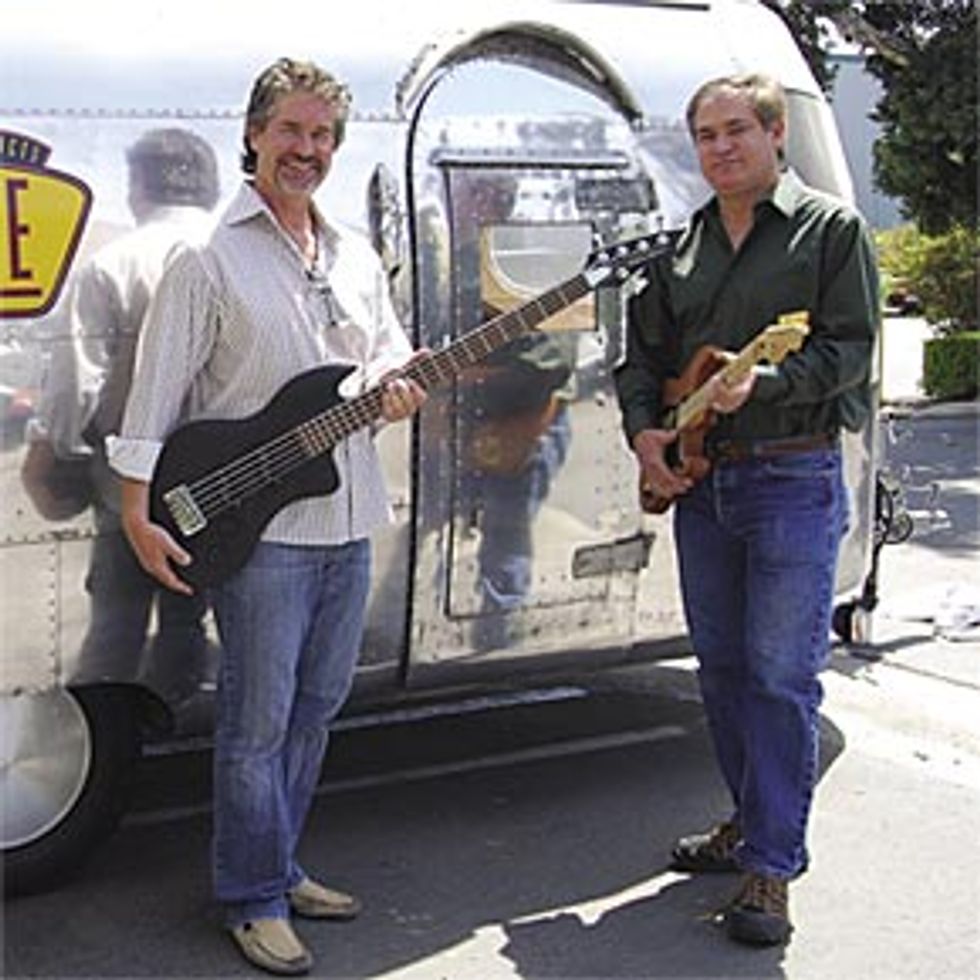 |
|
The company’s founder, Don Lace, Sr., had first been exposed to the guitar building scene in the late-sixties while helping with some speaker issues for a little outfit called Fender. Shortly after setting up Actodyne, Don began experimenting with his own unique pickup designs. By the late-eighties, Don had achieved his design goals of reducing rejection rate, increasing fidelity and reducing hum, dubbing them Lace “Sensors.”
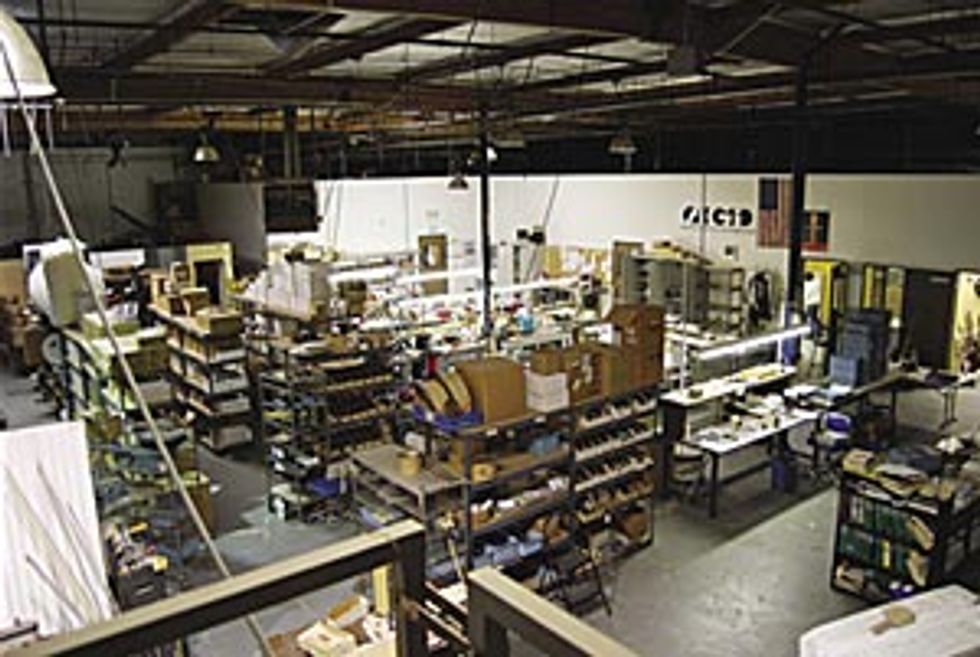 The circle completed itself when Fender became one of the first companies to embrace Lace’s designs by featuring his pickups first on the Strat Plus, then later on the Eric Clapton and Jeff Beck signature models. The Sensor pickups became widely known for providing many of the benefits of active circuits – low magnetic pull and a transparent, hi-fi tone – coupled with the simplicity of passive designs, i.e. no batteries or complex switching circuits.
The circle completed itself when Fender became one of the first companies to embrace Lace’s designs by featuring his pickups first on the Strat Plus, then later on the Eric Clapton and Jeff Beck signature models. The Sensor pickups became widely known for providing many of the benefits of active circuits – low magnetic pull and a transparent, hi-fi tone – coupled with the simplicity of passive designs, i.e. no batteries or complex switching circuits. Although Don Sr. passed away in 1992, his legacy literally lives on, with his sons, Don Jr. and Jeff, now at the helm. Not content to simply offer small, evolutionary changes to the existing product line, the next generation of Laces have developed the equally radical Alumitone pickup design, billed as delivering “huge top and bottom end.” We were fortunate enough to sit down with both Jeff and Don Jr. to discuss Lace’s past, present and future.
How did you get into the pickup business?
Don: Well, we started the business out of the family garage in 1979. It was my brother, my dad, Don Sr., who originally started the business and myself. We started out winding coils for the solenoid industry, but my father had been in contract with Fender in the sixties, working with Don Randall, Red Rose, Seth Lover and all of those guys. He would consult with the pickup manufacturers to reduce their rejection rate during production. What transpired from that was he came up with the Lace Sensor – which works differently than a passive pickup – and things kind of just went rolling from there.
How are the Lace Sensors different from other pickup systems?
Jeff: The great thing about Lace Sensors is that they are true single-coil pickups. As opposed to a humbucker, which quiets [hum] due to the second coil, this is a single-coil that keeps its single-coil tonality throughout. My father engineered the magnets to create a compression field around the actual coil itself, which makes them much more efficient. It also gives them more harmonics and blocks electromagnetic interference, such as power line hum.
Those are some pretty obvious benefits, but are there any situations where the added harmonics might not be appropriate for some players?
Jeff: We think that we’ve developed a pickup where everything under the sun is covered, from crunchy, overdriven sounds to pure, acoustic sounds, all based on the Sensor design.
Could you touch on the differences between the various Sensor models and the range of sounds that are available to players?
Jeff: On our original Lace Sensor series, the first four “flavors” that were developed were gold, silver, blue and red, of which gold has the most classic, fifties bell-like tone. Silver has that early-to-mid seventies fat Strat moan, while the blue is more akin to a warm P-90. The red version had the highest output, and is more like a humbucker, tonally.
How did your company’s connection to Fender come about? We’ve already kind of touched on it, but the first guitars I recall seeing your pickups on were the Clapton and Beck signature models. Were those the first instruments that came from the factory with your pickups installed?
Don: The first one was actually the Strat Plus, but I guess they all kind of went off at the same time. They sent some extra Strat Pluses to Clapton and Beck to see what they thought, and they got them both to sign up to be endorsers for the new Fender – the post-CBS Fender. I think Eric was the first one to really play them.
Jeff: Yeah, one of his biographies has a picture of him from 1985 actually playing some of the first hand built prototypes.
How did that make you guys feel?
Jeff: We felt tremendous. Having players of that caliber accepting the product so quickly was amazing.
Was this fresh out of the starting gate, or had you already been playing around with pickups at that point?
Don: We were probably four years into pickup development at that point. We’re in Huntington Beach and Barcus Berry was just down the street, so we talked with them about building it for us. We actually had a letter of intent signed with Kramer Guitars prior to the Fender deal – who knows where that would have taken us – but they were a little too busy to follow through on it. So we took a step back and regrouped to see where we really wanted to go, and low and behold Fender had the buyout. This enabled us to get in with Fender and sign an exclusive arrangement with them. Everything kind of happened at the right time for everyone; they were looking for something new and we had it – the acceptance was huge. I think this combination helped launch both companies.
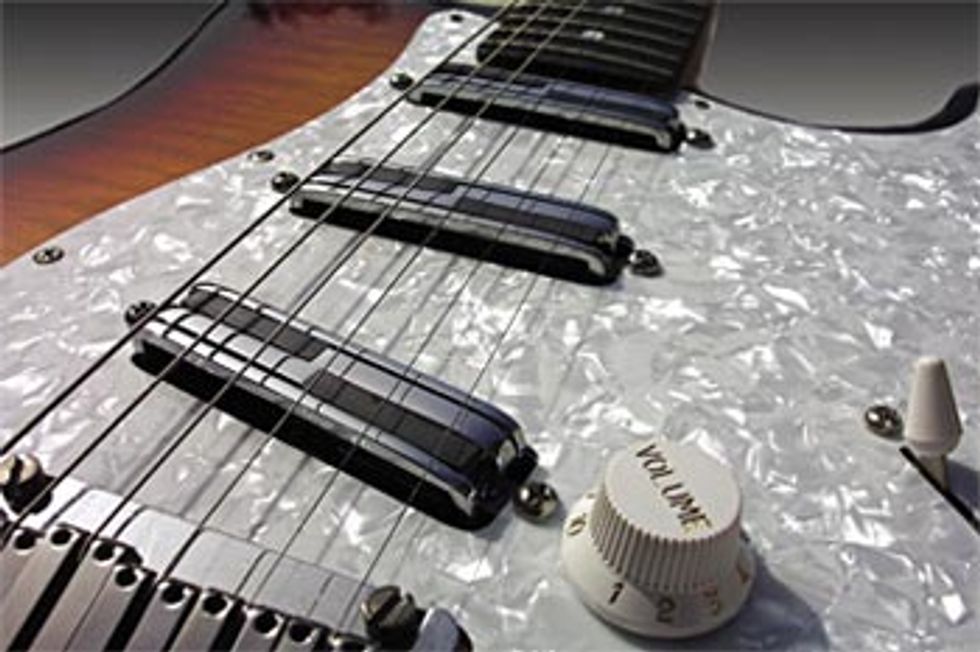 Where did the Alumitones originate? Were they an extension of the Sensors?
Where did the Alumitones originate? Were they an extension of the Sensors? Jeff: Actually, it’s a completely different technology that approaches the electronic equation much differently. Lace Sensors, and all other pickups under the sun, are primarily driving forces of voltage they produce; the Alumitone was approached in the other half of the equation, which is the current. With the Alumitone, we can maximize the current by minimizing the amount of turns.
We went from a Lace Sensor with 4000 turns of wire on it to an Alumitone that, in a sense, only has one turn wrapped around the magnet. Now, obviously that can’t work by itself, so we used a host of different parts from other items. We got the secondaries from a microphone, because I wanted to use a step-up transformer, but it went from a separate step transformer to being integral within the design itself. That’s how the fundamentals of the Alumitone were created. It’s an incredibly versatile technology because you can go from acoustic to real heavy metal with a simple manipulation of the windings.
The secondary aspect of the design was the architecture of the actual pickup itself, which allowed me to create a look and design that would be completely unique, and unlike anything else on the market.
Are these active pickups?
Jeff: They are not active pickups because in a sense, the whole pickup is the transformer, so it basically powers itself. The framework you see is the primary, and that’s coupled to the secondary output, which is a small 1/4” x 1/2” sized coil, which is the only true copper wire on the pickup. What you get is dead quiet operation with more output and real broadband response. It’s kind of like HDTV for pickups.
Strangely, they seem to have a vintage vibe to them; they wouldn’t look out of place on the old Supros and Nationals.
Don: Oh yes, I agree. We always joke that this pickup should have been invented in 1948.
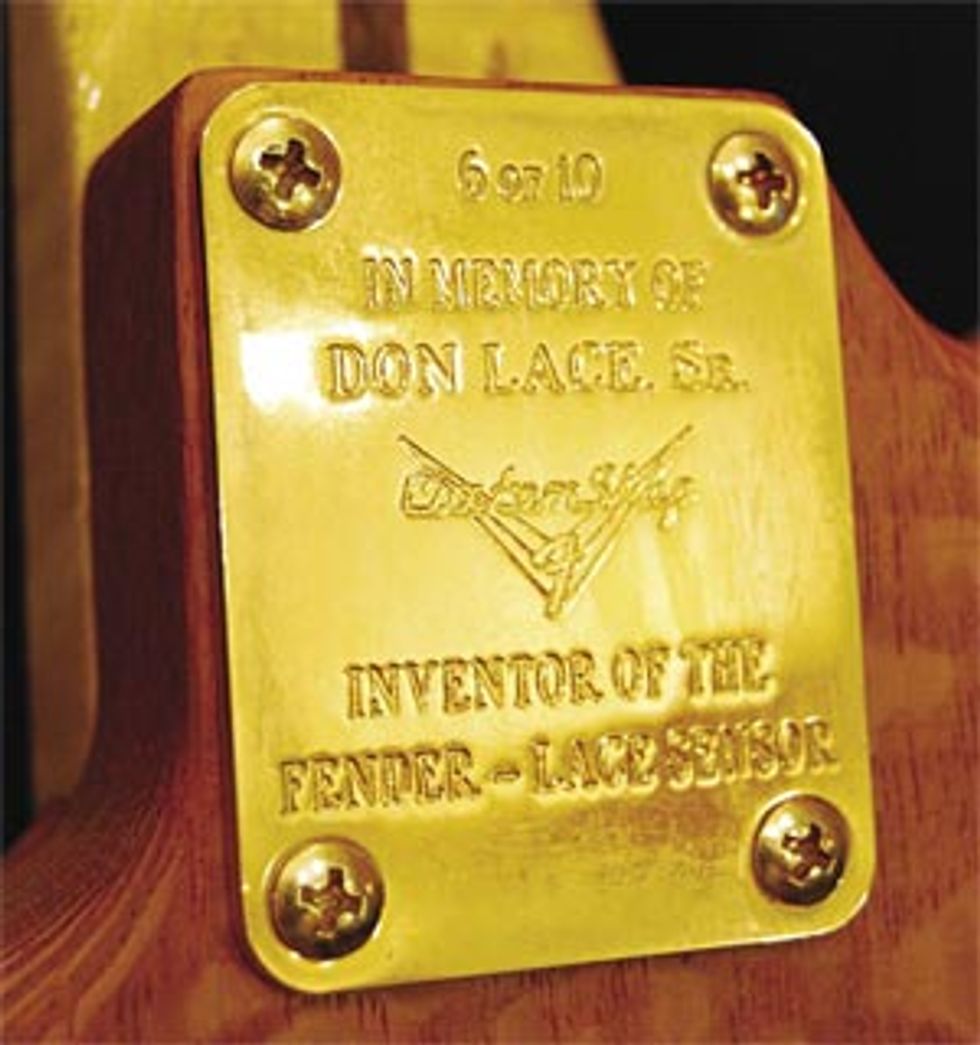 Where do you see the Alumitones’ placement within the current crop of pickups?
Where do you see the Alumitones’ placement within the current crop of pickups? Jeff: They are a very flexible and forgiving technology, so they really can be sculpted to any sort of application. We’ve generally gone down the middle of the road with them, in terms of tonality. We are coming out with some splitable models – some very heavy, super hot versions – but they can really be anything you want them to be. The great thing about their response is that the guitar plugged into a Marshall brings out the best elements of a Marshall stack, but that same guitar plugged into an acoustic amplifier gives you all of these acoustic overtones you didn’t expect. It’s all because of the frequency range that the Alumitone has.
Basically, we are like a car company – we’re a higher performance product for those who know.
Your website states that the Alumitones were created as a response to environmental concerns of using battery-powered preamps. Can you expand on that?
Jeff: Generally, the benefits come down to going with a passive system versus an active system. I know from experience that batteries are rarely recycled or properly disposed of. How many people with that system in their guitars are aware that they are adding to the pollution in this world?
Don: Also, the processing of aluminum scars the Earth a lot less than copper mining, which leaves these huge, huge holes. Copper prices have gone through the roof while aluminum oxide is one of the most abundant minerals on the planet. We are also looking into producing our Alumitone products with recycled aluminum in the near future. Thinking in a manufacturer’s sense, we realize that by shipping guitars and pieces, we are talking about shipping thousand of pounds, and we are cognizant of all the fuel it takes to complete this process.
How did you make the decision to move into instruments with the Helix bass?
Don: Well, we kind of saw it as a roundabout way to sell pickups. It helps us put them on the walls and showcase our technologies. We’ve done it in several different forms in the last three to four years, but we used the Helix basses to launch our Alumitones. Bass players are little more open to change and looking at new things, and so far we have been successful in that.
The Helix isn’t just a vessel for the pickups, though – it really brings an original design to the table. What were your goals when you were designing it?
Don: We had the idea for years, actually. We did some limited edition guitar versions a while ago with a twisted neck design – an ergonomic design that we developed. We built them here in the States, but they were actually a real bear to build, so we shelved it. We revisited and redesigned that concept for bass specifications. The market now is different; back then, it was primarily vintage-oriented, but now people are a bit more open to different designs, shapes and technology. We thought it was a good time to reintroduce [the design] with our pickup technology.
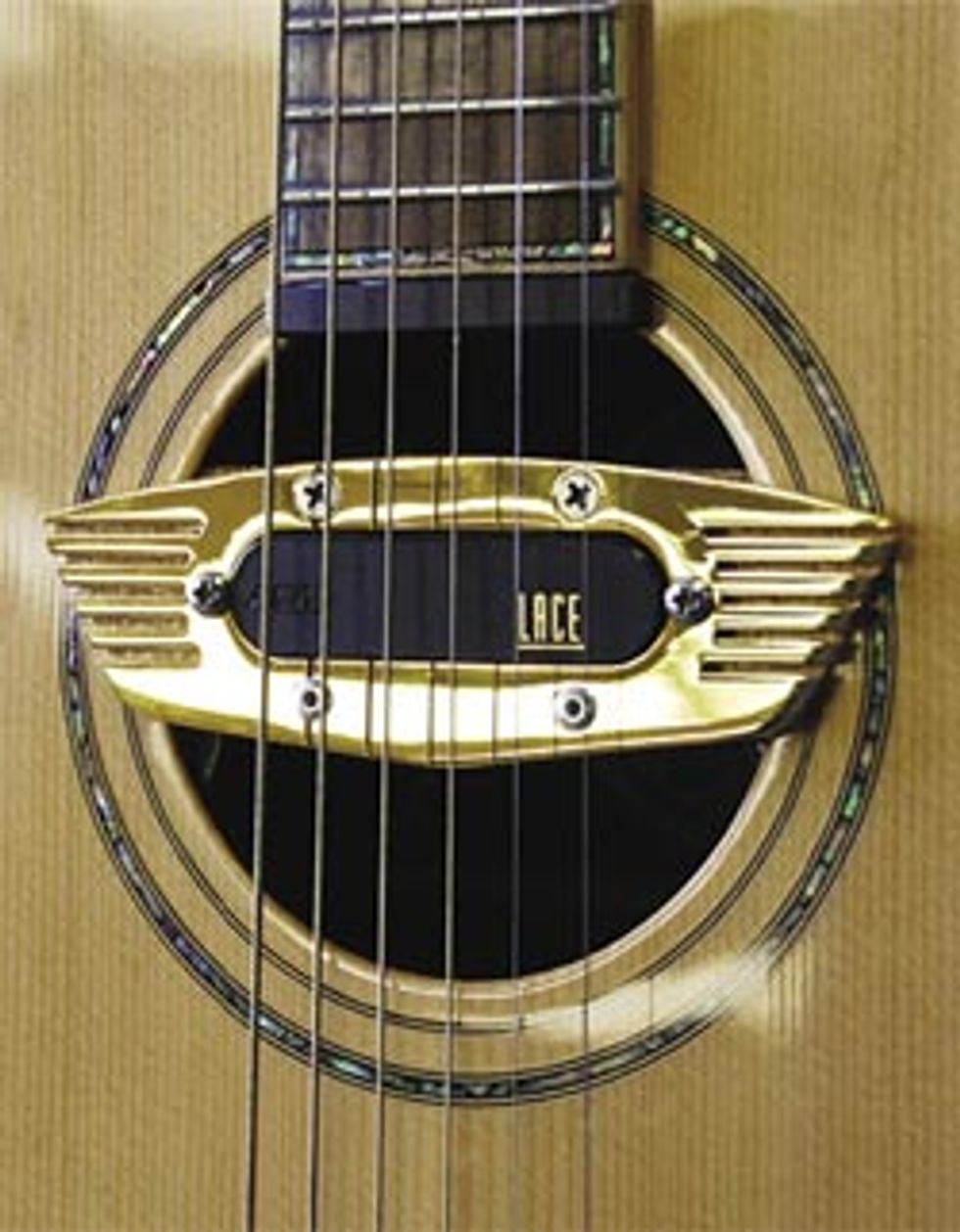 Can you tell us a bit more about the twisted neck design?
Can you tell us a bit more about the twisted neck design? Don: Well, it’s a neck that we have several patents on. The Helix has a gradual twist in it, but on the initial ones, there was a 20-degree difference from the nut in relationship to the bridge. This was very beneficial to the wrist and for playability, however, we found some geometric problems because it still has to be a straight line to be played. At that drastic of a twist, there were some problems that caused the guitar to fret out or buzz.
Jeff: Even though the neck was 20 degrees twisted, relative to the bridge, the relationship of the string to the fret right below it was the same as a regular guitar.
Where are your pickups manufactured?
Don: They are made here in the States, in Huntington Beach, California.
That must be great for controlling production, but how do you keep a reasonable price point?
Don: We are the only pickup manufacturer with a patent on everything we make. We take pride in that and we put a heavy emphasis on our intellectual property, including the Alumitone, the Lace Sensor and all the various iterations. We are able to build them here and protect them because we’re right next door. We’re not too worried about copycats out there, because there are a lot of nuances and only we know how to make them.
So if somebody was trying to copy these, they could make something that looks like it, but they’d have a hard time making something that sounds like it?
Don: That’s correct. It’s a bit of black magic – it might look black and white on a piece of paper, a patent application or a drawing, but as a pickup designer, you just kind of have to go with your gut on how to make them right.
What guitar companies are using Lace pickups in their guitars these days?
Don: Obviously Fender, and Godin just launched a line of guitars with the new Alumitones on them. National Reso-Phonic uses our products and there are some small boutique builders using them – you can check the website for that list. We have about two dozen major and boutique manufacturers road-testing them right now. We are really excited about the acceptance of our Alumitones across the board. The Lace Sensor has been our best seller to this day, and it’s the Fender players that continue to support these products.
So is the Alumitone an attempt to draw a broader range of players?
Don: Really, the Lace Sensors could probably cover a majority of players’ needs, but we needed something new out there.
Will you continue to develop Lace Sensors?
Don: We are still working on developing the Sensors. We just introduced two new models: the Emerald version is designed for the neck position and is like a Fender Texas Special without the noise, with a corresponding Purple version for the bridge.
Jeff: That’d be like a hot P-90.
Don: And then a reverse-wound Silver in the middle. It’s a little three pack that we just launched, and it’s starting to take off. There are always little integrations being done at Lace. We have it all the way to our Drop and Gains, which provide punchy drop D tuning without losing any articulation in the transition.
You guys always have a presence at guitar shows, both vintage and new. Do you feel sense a stewardship in supporting the industry?
Don: For sure. We feel that we have something to contribute – more so than other companies out there, because we actually offer something new for players. We also notice pedal and effects manufacturers using our Alumitones for showcases because it demonstrates the product better. Everything that engineer wanted in that stompbox or amp, they can hear. The sound or effect isn’t being choked by a coil or certain tonal signature. You maximize what you have with the Alumitones.
So what’s on the horizon for Lace?
Don: We’ve got a lot of different Alumitone models launching soon. We have four, five and six-string soapbar models for basses and a new split-coil Alumitone coming out. Basically we have a full plate of items, pickup-wise, coming out, and we’ll continue with our bass line, with the eventual release of our guitar model.
Sounds like you’re going to have new products every week from now until Summer NAMM.
Don: Pretty much!
Lace Music
lacemusic.com

